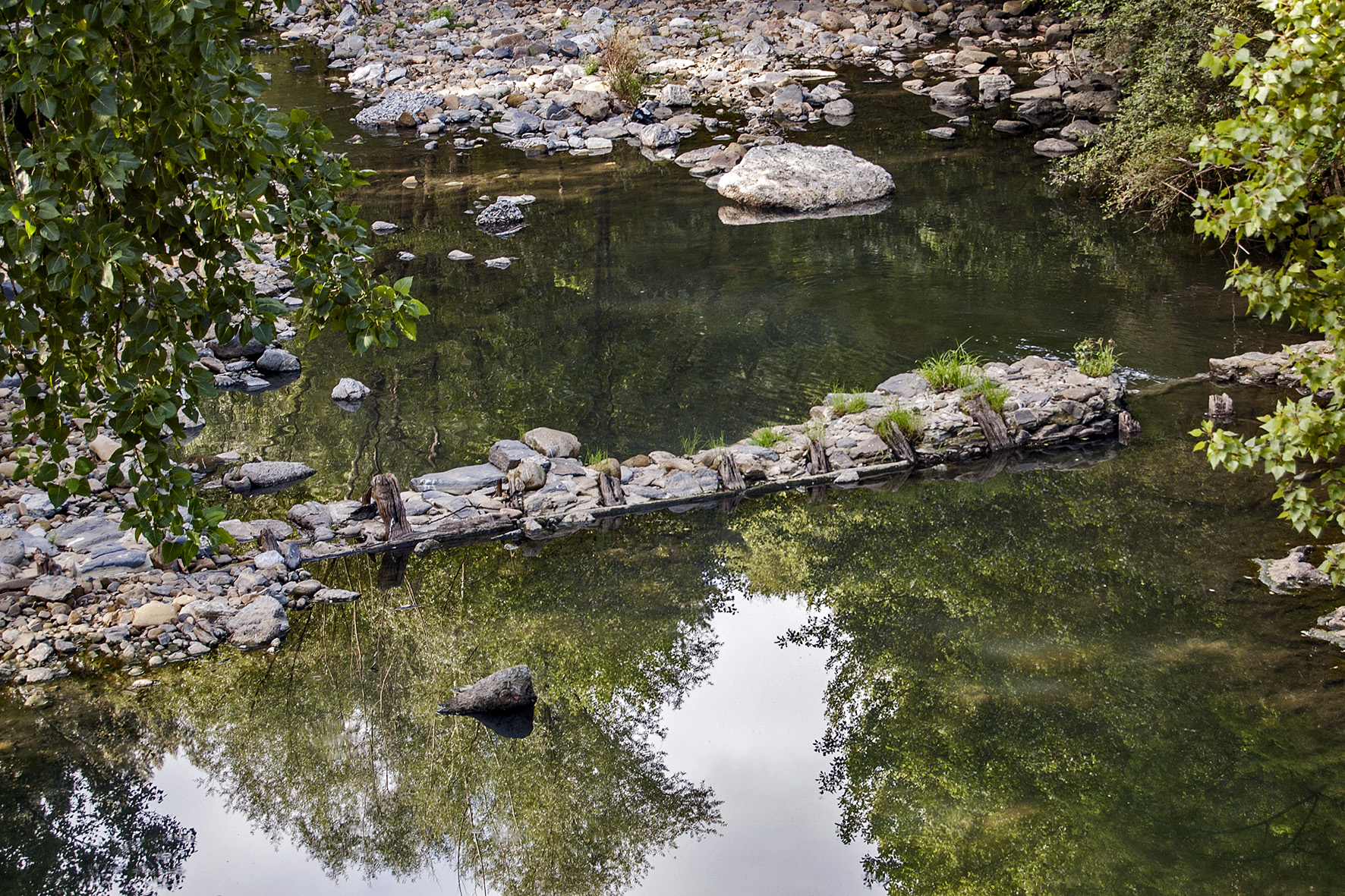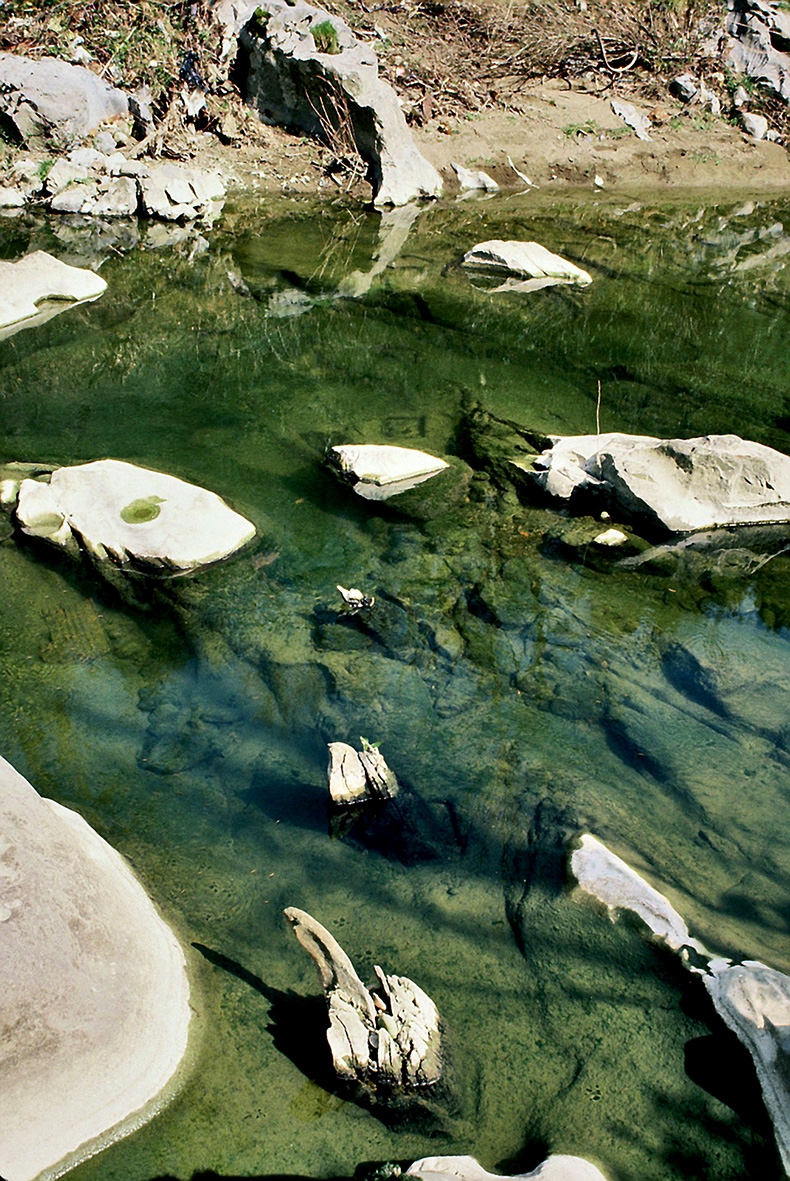Basque ethnography at a glance

Vestiges of the dam at Vicario Mill in the neighbourhood of Molinar, 1978. Miguel Sabino Díaz.
Heavy rainfall caused a great deal of destruction in the Valley of Carranza (Bizkaia) back in 1978 and revealed the remains of ancient timber dams, which allowed to know in situ the technique used in the construction of these old-time hydraulic structures of clear medieval origin.
Well into the 19th century the majority of the watermills in the Valley employed small, straight single-walled dams to provide power to the water-raising machinery.

Site of the former dam of Pondra Mill in the neighbourhood of La Cadena, 1985. Miguel Sabino Díaz.
The construction of this type of dam started with the excavation of several holes into the rock at the bottom of the channel, usually close to a naturally terraced stretch of the river. As many holes as required for the dam to run from bank to bank were dug, two to three in rivers with low flows and between five to six in case of higher volumes. Most were square or rectangular, except for traces of circular holes in the dam at La Aceña del Cura Mill in La Argañeda (Aldeacueva). The perimeter of the holes measured on average 30×30 cm, 18×17 cm the smallest and 44×48 cm the largest. Their depth ranged from 17 to 20 cm.
Timber logs were set in the excavated holes and secured with wooden wedges, earth and stones from the river. The logs were placed in a sloping position across the rocky riverbed, so as to resist the force of the water. Each log was in turn reinforced with a second log driven into a small hole, excavated or natural, to better buttress the face of the dam.
The structure was fitted with panel boards 4 to 6 cm in thickness and approximately 24 cm in width. One by one the boards were placed on the support logs and holes bored at both ends through the timber into the logs. Wooden pins nailed in the holes with a heavy hammer held the boarding together. The sloping frame was set in a ditch excavated into the rock or soil foundation.
The purpose of such barriers was to confine the waters and direct them towards the mill through the mill race, that is, the spillway of the dam. The surplus of water was discharged over the crest.
Traces of these dams still found along the course of rivers and are remaining vestiges of a number of mills: namely, Anteo (Bernales), Baucallejo (Pando), La Aceña del Cura (Aldeacueva), Malmolino (La Calera del Prado), Villarruiz (Ambasaguas), Peñamolino (Biáñez), Liende (La Tejera), Marañón (Sierra), Vicario (Molinar) and Pondra (La Cadena).
Miguel Sabino Díaz – Etniker Bizkaia – Etniker Euskalerria Groups
Translated by Jaione Bilbao – Language Department – Labayru Fundazioa

